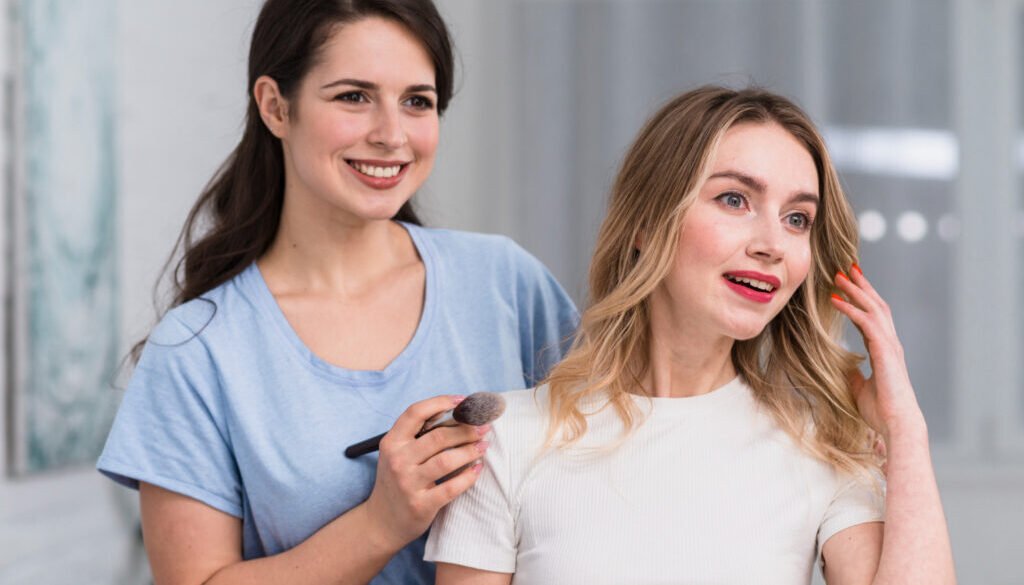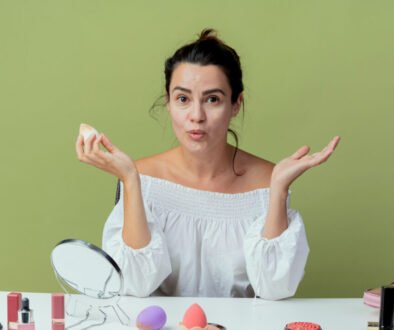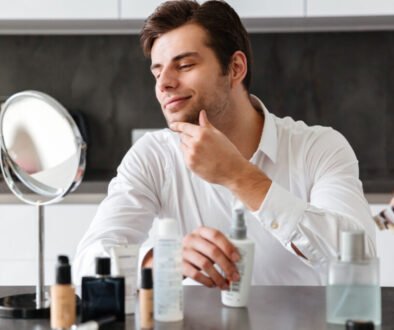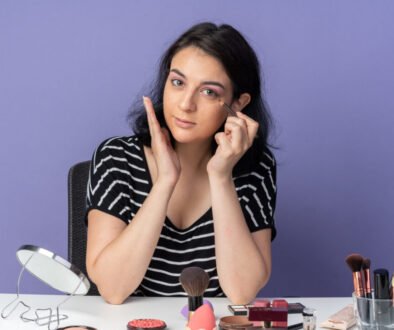Dermatologist-Approved Skincare Routine for Clear & Healthy Skin
Introduction
The internet is flooded with skincare trends, miracle products, and complex 12-step routines. It’s enough to make anyone’s head spin—and their skin break out. But what do the experts actually recommend?
Dermatologists agree: an effective routine doesn’t need to be complicated or expensive. It needs to be simple, consistent, and built on clinical evidence.
This guide cuts through the hype to bring you a foundational, dermatologist-approved skincare routine. We’ll provide the “why” behind each step, based on skin biology, so you can make informed choices for clear, healthy, and resilient skin.
You will learn:
Let’s build a routine that actually works.
The Pillars of a Dermatologist-Approved Routine
Dermatological skincare is built on three core principles:
- Gentleness: Avoiding anything that strips or damages the skin barrier.
- Evidence-Based Ingredients: Using components with proven scientific results.
- Sun Protection: The undisputed, most important step for health and anti-aging.
The Basic, No-Frills Routine (The Foundation)
This is the essential framework. Everything else is supplemental.
Morning Routine: Protect
- Gentle Cleanser
- Why: To remove overnight sweat and oil without compromising the skin barrier.
- Derm Tip: If your skin is dry, just splashing with water is sufficient. Avoid harsh, stripping formulas.
- Moisturizer
- Why: To hydrate and fortify the skin barrier, reducing transepidermal water loss (TEWL) throughout the day.
- Derm Tip: The best moisturizer is the one you’ll use consistently. Look for humectants (hyaluronic acid) and occlusives (ceramides).
-
Broad-Spectrum Sunscreen (SPF 30+)
- Why: This is non-negotiable. It prevents skin cancer and is responsible for preventing up to 90% of visible skin aging.
- Derm Tip: Apply enough (a shot glass amount for the body, a quarter-sized for face/neck). Reapply every two hours with direct sun exposure.
Nighttime Routine: Repair & Reset
-
Cleanser (Double Cleanse if wearing makeup/SPF)
- Why: To thoroughly remove sunscreen, makeup, pollution, and impurities accumulated during the day.
- Derm Tip: An oil-based cleanser first followed by a water-based cleanser is the gold standard for a deep yet gentle clean.
- Moisturizer
- Why: Skin repair and regeneration peak at night. A good moisturizer supports this process.
- Derm Tip: You can use a slightly thicker cream at night than in the morning.
Where Treatment Products Fit In (The “Active” Step)
Once the basic routine is solid, you can add one treatment product to target specific concerns. This is applied after cleansing and before moisturizing.
- For Acne & Clogged Pores: Salicylic Acid (BHA) or Benzoyl Peroxide.
- For Anti-Aging & Wrinkles: Retinoids (e.g., retinol, prescription-strength tretinoin). Use only at night.
- For Dullness & Hyperpigmentation: Vitamin C (in the AM) or Alpha Hydroxy Acids (AHAs) like glycolic or lactic acid (in the PM).
⚠️ Crucial Derm Advice: Introduce one active at a time. Start slowly (2-3 times a week) and monitor your skin’s tolerance. Overusing actives is a leading cause of irritation and a damaged skin barrier.
Dermatologist-Recommended Ingredients
Concern
Acne
Aging & Wrinkles
Dryness
Hyperpigmentation
Redness & Sensitivity
Evidence-Based Ingredients
Salicylic Acid, Benzoyl Peroxide, Retinoids, Niacinamide
Retinoids, Vitamin C, Sunscreen, Peptides
Hyaluronic Acid, Ceramides, Glycerin, Squalane
Vitamin C, Niacinamide, Azelaic Acid, Retinoids
Niacinamide, Centella Asiatica, Ceramides
What Dermatologists Tell You to Avoid
- Over-Exfoliating: Physical scrubs can cause micro-tears. Even chemical exfoliants should be used 1-3 times per week, not daily.
- Fragrance: It’s a common irritant and sensitizer, especially in products that stay on the skin.
- Stripping Your Skin: Your face should not feel “squeaky clean” after washing. That feeling means your protective barrier has been stripped.
- DIY Recipes: (e.g., lemon juice, baking soda). These can disrupt your skin’s pH and cause severe irritation or burns.
- Constantly Switching Products: It takes 4-6 weeks for your skin to adjust and show results. Stick with a product long enough to see if it works.
The #1 Piece of Advice: Consistency
A simple routine done consistently is infinitely more effective than a perfect routine done sporadically. Your skin thrives on routine and predictability.
Key Takeaways
- Simplify. Cleanse, moisturize, and apply sunscreen every morning. Cleanse and moisturize every night.
- Protect. SPF is the most crucial step for long-term skin health.
- Target. Add only one treatment active at a time to address specific concerns.
- Be Patient. Results take time—often a full skin cycle (28 days) or more.
When in doubt, less is more.



